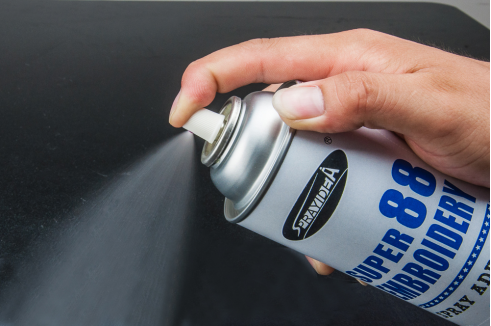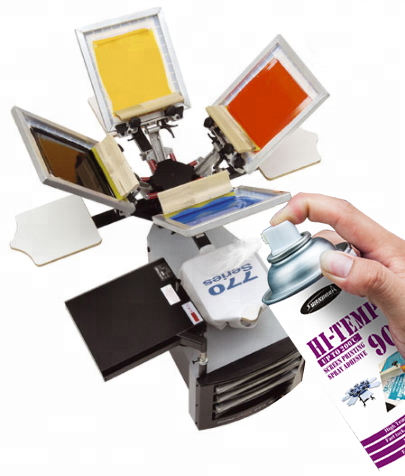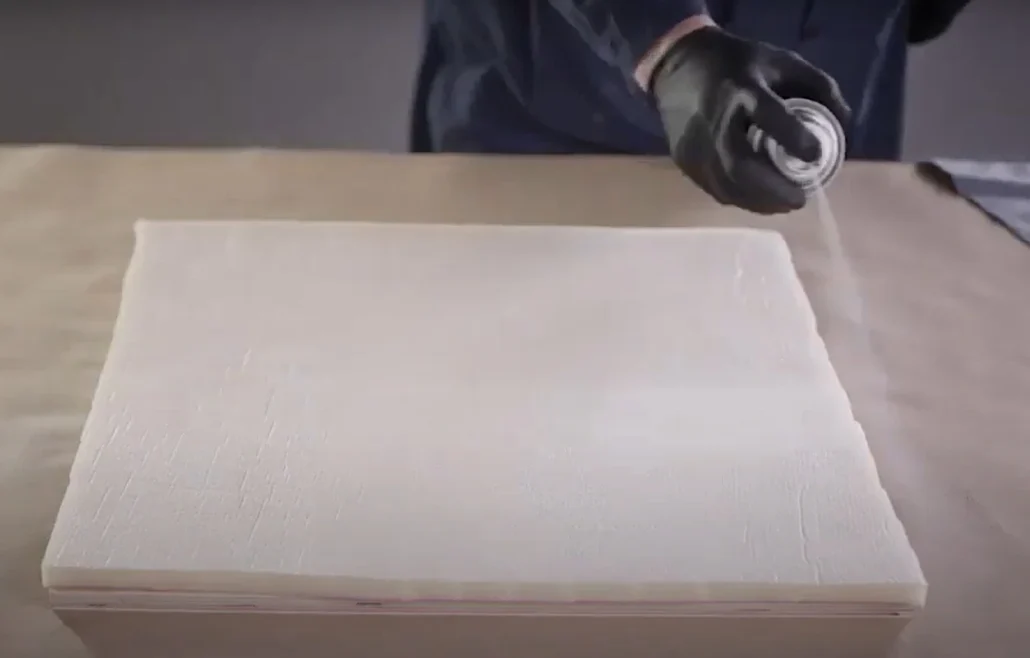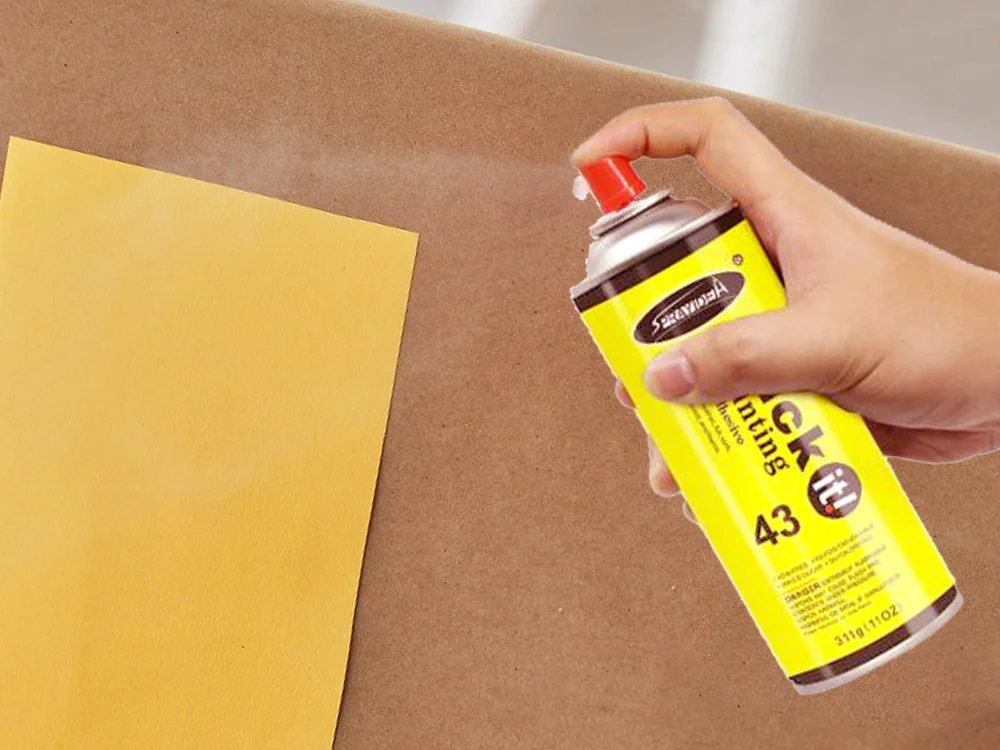In recent decades, spray adhesive has gained popularity for a host of reasons. Spray glue is the best option when working with fabric, textile, paper, wood or foam. It offers great advantages over traditional adhesives.
In this post, we will explore why so many industries rely on spray adhesive. This article will help you learn more about this type of glue and choose the right glue for your project.
What is spray adhesive?

Spray adhesive is a type of glue applied as a mist or web. Professionals and DIY enthusiasts like to use it for many kinds of projects. Some use cases include furniture repairs, crafts, school projects, mending clothes, and fixes.
Most spray adhesives look transparent when dried. This adhesive contains solvents, resins and other additives. Some widely used ingredients include xylene, toluene and acetone.
Spray glue is repositionable and thus is a good choice for exact placement. Unlike contact glue, spray glue does not cause wrinkling. So you can apply it on paper and other thin surfaces more easily.
There are several types of spray adhesives. The most commonly used type is general-purpose glue. If a project requires superior bonding strength, you need a powerful adhesive spray.
What are the benefits of using spray adhesive?
The technology behind glue spray has come a long way in the past couple of decades. This transparent glue is often the best choice for gluing large objects together. Here are some notable advantages of using spray glue:
Spray adhesive bonds quickly
Regardless of the type of surface you apply spray glue on, it will dry quickly. Thanks to this property, this adhesive is great for projects with tight deadlines. For example, this glue works very well for installing vinyl planks. You will find this glue very convenient if your project requires drying the glue fast.
Strong bonds

A glue spray can provide a long-lasting bond between surfaces when applied correctly. This glue offers strong adhesive bonding. That is why it is often the go-to adhesive for industries with heavy materials such as metal and wood.
Needless to say, you need the strongest spray adhesive glue for heavy materials. Spray glue usually works better with leather, fabric, paper and other light materials.
If you have bought a spray adhesive for paper, you cannot use the same glue to bond pieces of wood together. The bond strength is adjustable. That means you can increase or decrease the bond strength by applying more or less adhesive. You may need spray wood glue explicitly designed for this purpose.
If you want to glue light fabric or paper together, spray glue is better than contact glue. It is an all-purpose glue that bonds many materials, including vinyl and wood. The strength of this glue also lies in its wide applicability.
Spray adhesive dries clear
Spray glue dries clear and does not leave any residue behind. The glue is applied in a fine mist so your project remains mess-free. You do not have to deal with any unwanted glue build-up. This adhesive does not turn yellow with age, so it is a good choice for light household projects and fixes.

Heat resistant and waterproof
Spray-on glue is suitable for bonding objects that are supposed to be exposed to heat and moisture. This adhesive is the go-to product for carpet-lining vehicles. You can rely on glue spray when working with wood, leather and foam.
It is useful for industries such as automotive, construction, home appliance and HVAC.
Easy repositioning
Spray glue gives you room for mistakes. Even if you have already glued items with spray-on adhesive, you can adjust them.
The ease of repositioning adhesive spray is a major reason for the popularity of this glue. This glue is suitable for projects that need last-minute corrections or changes. This property also comes in handy when bonding two irregularly shaped surfaces.
Easy to remove
If you have accidentally applied glue on something, don’t worry. You can clean off the spray on adhesive. Use common solvents such as turpentine, mineral spirits, or citrus-based cleaners. You can use a commercial glue remover to remove adhesive spray easily and quickly.
You can safely use a clay bar to remove adhesive spray residue from a smooth surface. The procedure will not damage the finish. A nail polish remover containing acetone can also help you get the job done.
Very easy to use
The glue comes in a pressurized container and is applied in the form of a fine mist. Its application is an easy and satisfying experience. You do not have to use a roller or brush. Just press the trigger and apply the mist.
For safe usage, it is crucial to follow the manufacturer’s instructions. Use this adhesive in a well-ventilated area and prepare the surface before application. The surface must be clean and dry.
Easily available
There are many brands of spray adhesives. You can order them online or buy them from your local craft store. Regardless of your geographical location, you will have easy access to this glue.

Tips on applying spray glue
The efficiency of spray glue largely depends on the way it is applied. Here are some tips that will help you get the best out of this adhesive.
-
First, it is very common to produce some over-spray when applying spray on glue. Before you start applying the glue, cover the surrounding surfaces. Use newspaper, drop cloth or masking tape.
-
Use rugs or soft cloths to wipe up any excessive or unwanted adhesive. Then use an adhesive remover to remove all traces of the adhesive.
-
Only apply the spray in a well-ventilated area, and be sure to avoid inhaling the mist.
-
Before you press the release button, shake the can without tilting it upside down. To make sure the nozzle is working, consider spraying a test pattern. Once you have sprayed the glue, wait about 30 seconds before you join two items or surfaces.
-
And when releasing the mist, keep the nozzle at least 3 inches away from the items being glued together. If the can is too close to the things, the adhesive will clump up and take longer to dry.
-
If the nozzle clogs up, you can use a piece of wire to unclog it. Just stick the wire into the hole and open it up. Clean the nozzle before you store the can for future use.
-
As you apply spray adhesive on a surface, bubbles can appear. You can remove the bubbles by spraying the mist in a specific way. Spray the mist while applying the pressure at the center. Then go outward and drive the bubbles out.
Wrapping up
Adhesive sprays are gaining popularity for their strength, durability and wide applicability. If you need some adhesive for your DIY project, a spray adhesive is likely to be a better option for your project.
This adhesive beats traditional adhesives in terms of efficiency, precision, and strength. To get the best out of this glue, you have to choose the right glue and apply it properly. We hope now you are prepared to choose the best spray adhesive for your project.
